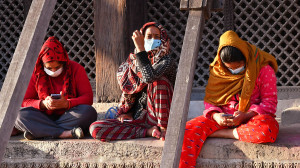Columns
Nepal’s invisible poverty
Are we measuring poverty with parameters that create an illusion of economic progress?
Ameesha Rayamajhi
Measuring poverty is a political act. We think of poverty as the lack of money, but it is far more complex. While Nepal’s poverty rate is rapidly declining on paper, the deeper realities remain hidden. What are these ‘other’ dimensions of poverty which we fail to see? Are we conveniently measuring poverty with parameters that create an illusion of economic progress?
Nepal’s structural and historical realities make it vulnerable to high rates of poverty. Its history—spanning the monarchy, the Rana oligarchy and the decade-long armed conflict—has left behind deeply unequal and complicated land ownership patterns. Such a history of distributive injustice has made today’s reality politically volatile. It took seven constitutions and rapidly changing elected governments to get to this precarious state of affairs. Catastrophic natural disasters like the 2015 earthquake and health-related crises like Covid-19 have only increased poverty in the country. Infrastructural inadequacies, especially in rural areas, have left Nepal lacking electricity, proper education, healthcare and clean water. Caste and gender inequalities have condemned generations of low-skilled, servile, or even wholly unpaid labour, which reinforced poverty.
As a result, poverty is shaped by how we measure it. Nepal’s poverty line measures income-based poverty. The Nepal Living Standards Survey (NLSS) was first conducted in 1995-96 to measure and quantify poverty in Nepal. It measured various aspects of household welfare, including consumption expenses, demography, credit, employment, income, health and education, etc. The subsequent rounds of the survey were conducted in 2003-04 (NLSS-II), 2010-11(NLSS-III) and 2022-23 (NLSS-IV). There was a 12-year gap between the last two surveys, and NLSS-IV came after the Constitution of Nepal 2015 adopted the federal structure. Notably, there is an urban-rural differentiation within the provinces and a separate Kathmandu Valley urban category in measuring poverty in these surveys. Poverty is measured in ‘monetary terms ’ using either income or consumption as parameters.
Nepal has taken the ‘Cost of Basic Needs’ (CBN) approach for the poverty line. The CBN approach uses a methodology to quantify the monetary value of basic needs, including food and non-food items. These items represent a ‘bundle of needs’ and are similar to India’s Poverty Line Basket (PLB). For the CBN approach, Nepal’s Seventh Five-Year Development Plan identified the following needs: Food, fuel, wood, clothing, drinking water, road transportation and, notably, peace and security.
The poverty line was drawn by the minimum amount of money required to maintain a minimum daily calorie intake of 2,220 kCAL per day, based on global standards and other ‘non-food’ goods and services. In 2011, the poverty line in Nepal was around Rs19,261 per person per year; today, due to inflation, it has risen to Rs 72,000. The poverty line also reflects different incidences of poverty across various regions: Rural Nepal performed much worse than urban Nepal and Sudurpaschim Province performed much worse than Gandaki Province.
There are certain flaws with the poverty line. Income is no longer an accurate measure of poverty, especially in rural Nepal, where employment is often seasonal, informal and self-employed. The poverty line tends to overlook the non-monetary dimensions of poverty, such as health, equality, sanitation, nutrition, education, reproductive rights, capabilities, risks and vulnerabilities, dignity, democracy, oppression and exploitation. Further, it measures poverty in an absolute sense, ignoring relative deprivation. Even if inequality rises in Nepal, as long as people meet the minimum threshold, they are not considered poor.
Poverty is also measured by assuming ‘households’ as a basic unit rather than individuals. Poverty economists like Paul Streeten have long argued that a household approach to poverty is flawed: The household size may differ and some may have more ‘dependant’ members like children and elderly. Further, women’s domestic work is not compensated and households can also be deeply unequal. Even if households appear to be getting richer—measured by the increased consumption—this is due to the high inflow of remittance by family members working abroad. It seems like we are exchanging generational poverty for the lesser evil of brain drain. While there is already a slow rate of decrease in measured poverty rates from 25.16 percent to 20.27 percent from 2011 to 2023, the truth is that Nepal is much poorer.
Nepal did recognise the inadequacy of the poverty line with the introduction of a ‘multidimensional approach’ to poverty in 2014. The Multidimensional Poverty Index (MPI) measures the non-monetary aspects of poverty, which naturally showed a drastic decrease from 30.1 percent to 17.4 percent from 2014-2019. Decreased poverty is due to better performance in parameters such as child and maternal health. Multidimensional Poverty Indices, however, are notoriously manipulated by governments worldwide to present a glossy picture of poverty reduction. Take India, for example, where the Modi Government has closely monitored around 30 global indices, like the Global Hunger Index and pressured agencies to alter the parameters. As a reaction, India also made its own national multidimensional poverty index, where owning a bank account was an indicator of poverty under the parameter of ‘standard of living’. One may have a bank account, but can it not be empty?
It is high time we move beyond these politicised and monetary notions of poverty. Nobel Laureates like the Indian economist Amartya Sen and American scholar Martha Nussbaum have long challenged these monetary conceptions of poverty. Poverty should be a measure of the ‘capability approach’ as the accurate measure of poverty lies in the absence of a person’s capability to live the life they want. This is not just an abstraction—it can be measured by the essential ‘beings and doings’ for a good life, like access to the internet, meaningful relationships, health and a clean environment. This approach also recognises poverty as a problem of efficient allocation of resources. For example, Persons with Disabilities (PwD) might have a very stable income source and good consumption expenditure but might not live a life they are truly capable of living due to physical limitations.
Geopolitical inequalities have also contributed towards poverty in Nepal. In the 1980s, the World Bank gave loans to Nepal with certain pre-conditions known as ‘Structural Adjustment Programmes’ (SAPs). The structural adjustment in Nepal included opening up foreign trade and liberalising the financial sector, helping with private investment. The SAPs imposed by the World Bank and International Monetary Fund (IMF) are widely criticised for being neoliberal and a one-size-fits-all approach for all borrowers. SAPs prioritise economic liberalisation, which in turn facilitates foreign corporate expansion. Critics argue that this has created exploitative labour conditions and destroyed national markets. The ‘third world’ became off-shore factories and export-based economies, leading to global oversupply. In the garb of ‘creating jobs’, the countries in the Global South compete to produce the cheapest product; the unemployed labour markets undercut each other to work for an even lower wage. This is a race to the bottom.
After all, if poverty were just about money, then people would be mere statistics and numbers. As Nepal is set to graduate from the list of Least Developed Countries (LDC) in 2026, we must begin to understand development by recognising our citizens as human beings. The country must redefine development beyond economic indicators, ensuring policies to address structural inequalities and enhance human capabilities.




 19.12°C Kathmandu
19.12°C Kathmandu
.jpg&w=200&height=120)
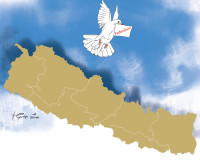

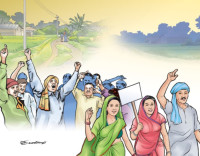


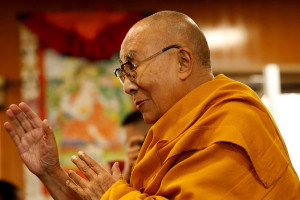
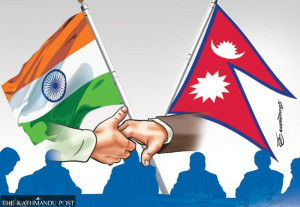


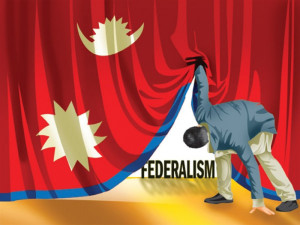

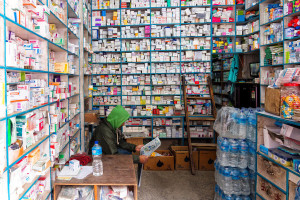
%20(1).jpg&w=300&height=200)

